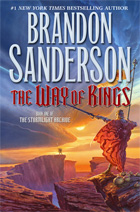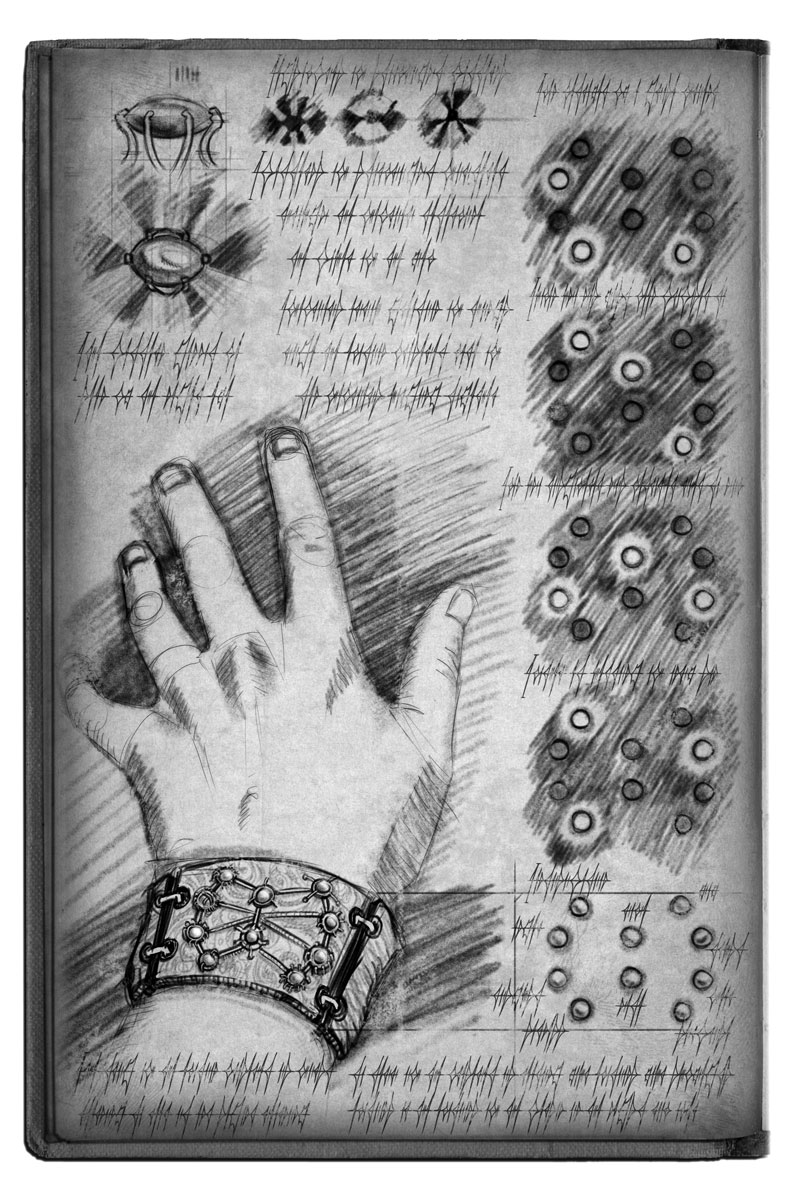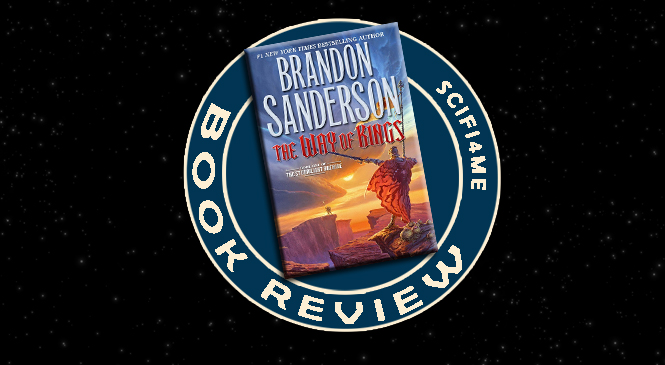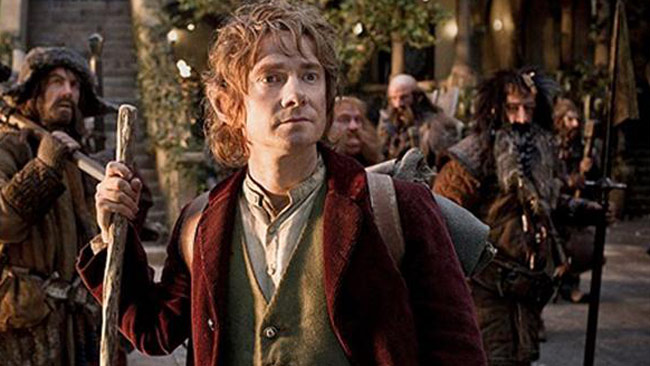Review: THE WAY OF KINGS is Almost Worth the Page Length


The Way of Kings
Written by Brandon Sanderson
Published by Tor Books on August 31, 2010
1,007 pages (hardcover)
ISBN: 978-0-7653-2635-5
At over a 1,000 pages, The Way of Kings is not a novel for the faint of heart. But if you are someone who enjoys losing yourself in a fantasy world, The Way of Kings is the novel for you.
American author Brandon Sanderson spent over ten years completing The Way of Kings, which is the first part of an expected 10 book series called The Stormlight Archive. TWOK was first published by Tor Books, and reached number seven on The New York Times Best Seller list within the first week of its release on August 31, 2010. In 2011, it won the David Gemmell Legend Award for best novel. Sanderson also wrote The New York Times Best Seller book series The Wheel of Time: originally authored by Robert Jordan who died in 2007, The Wheel of Time is a trilogy series of epic fantasy genre novels.
Fans of the epic fantasy genre are used to long reads, and TWOK certainly does not disappoint in that respect. With a prelude, prologue, 75 chapters, epilogue, and 9 interludes, it’s not all that surprising this novel reaches over 380,000 words. Thankfully, Sanderson proves his merit by asking readers only to follow three principal plot threads, rarely indulging in plot digressions. He weaves an intricate story from beginning to end, with one absorbing chapter after another.
A majority of TWOK is a world-building experience leaving readers little to be questioned regarding the world of Roshar. Although beautifully written, readers should be warned that not much really happens until nearing the end of the book. There is plenty of dialogue but it is guaranteed that readers who require a little more action will be discouraged fairly quickly after the first act. I am a huge proponent for all the buildup to the climax, however, because readers need a full understanding of this fantasy world; its kingdoms and locations, as well as the political scenery and background of the principal characters, to truly understand and appreciate the beauty of the final pages.
![[map of Roshar, book artwork by Isaac Stewart]](http://SciFi4Me.com/wp-content/uploads/2016/08/twok_map-0_roshar-1024x773.jpg)
TWOK focuses on four principal characters: two warriors, Dalinar and Kaladin, the artist and scholar Shallan, and the mysterious assassin Szeth. Most of the novel is primarily from the perspective of Kaladin, who we first meet as a slave being delivered to a region known as the Shattered Plains where an extensive war is being waged between the nation of Alekthar and a race of people called the Parshendi.
Kaladin’s story is one plagued with strife and betrayal. When he was a boy, Kaladin had a promising future as a surgeon following in his father’s footsteps. However, after some rather terrible events, he ends up on the battlefield in hopes of protecting his younger, much softer brother. Years later, and with a fresh slave brand on his forehead, Kaladin is sold to Highprince Sadeas and placed on a bridge crew. His job is to carry a large portable bridge across the Shattered Plains so Alethi soldiers can cross the large chasms that separate the plateaus of the Plains in order to battle the Parshendi. His other role is to draw the attention of the Parshendi arrows so they don’t focus their attention on the more valuable soldiers.
![[Shattered Plains map, book artwork by Isaac Stewart]](http://SciFi4Me.com/wp-content/uploads/2016/08/twok_map-3_shattered_plains.jpg)
Dalinar is the opposite end of the spectrum as a warrior from Kaladin. As an Alethi high prince like the man who owns Kaladin, he commands one of the various Alethi armies who have setup shop on the Shattered Plains. Dalinar also owns a set of rare Shardplate armor and Shardblade, which are magically enhanced pieces of gear that can be traced to an ancient sect of warriors known as the Knights Radiant. The Shardblades are more coveted than the Shardplate, though the set together are nigh unbeatable on the battlefield. Dalinar is the brother of the Alethi king whose assassination was the event that sparked the war, and now he is the uncle of the supremely paranoid once-heir and now king, Elhokar. He has two sons who are the yin and yang of each other: Adolin the warrior and Renarin the sickly youth. Needless to say, Dalinar’s struggles on the battlefield are very different than those of Kaladin, and he is far more politically involved. This offers the readers a much more involved view of the Alethi power structure.
Probably the most fascinating of the bunch is Shallan, whose background is shrouded in mystery, though we get a glimpse of her past here and there. She is a young brightlady and only daughter in a broken family of four brothers. Perhaps the best way to describe the females of Roshar is to compare them to the women from a Jane Austen novel: Shallan’s most important purpose in life is to be a polite and well-mannered woman and marry well. The biggest difference is that in this world, scientific research, scholarship, and even reading and writing are female obligations and responsibilities only.
When the readers are introduced to Shallan, she is traveling to the coastal city Kharbranth in hopes of becoming the ward of Jasnah Kholin. Jasnah is sister to the king Elhokar, and a famous heretic scholar. Shallan has put herself in Jasnah’s path for one reason: to steal an artifact known as a fabrial. Like Shardblades, fabrials are magical, and certain types of fabrials, like Jasnah’s in particular, can soulcast materials from their current form into whatever the soulcaster wishes, as long as it is one of the ten essences. For instance, one can use the fabrial to change something like wood into food. Jasnah accepts Shallan as her ward, obviously unaware of her ulterior motives, and starts tutoring her. Shallan’s talent at drawing from memory is her skill that endears her to all the people she crosses paths with, but her extraordinary wit and sharp tongue are what endears her to the reader. While the other principal characters are solemn, she is more dynamic, making her a much more interesting specimen.

Though all four principal characters have virtually no interaction with each other, each of their personal experiences give us a different, more encompassing view of the world and the primary struggles of the novel. The war on the Shattered Plains, as it turns out, is not the central conflict of TWOK. Much of the conflict happens internally for each of the characters.
Kaladin’s struggle is to find the will to survive in a situation that is hopeless. He has this need to protect and save instilled in him by his surgeon father which he projects on all those around him. He consistently finds himself at odds with authority — known as “lighteyes” — making his goals that much harder to obtain. But in a world where darkeyes are second class citizens, and all the lighteyes he has encountered betray him, Kaladin struggles to stay motivated.
Dalinar struggles with the change his age has forced upon him. When he was young, before the war and death of his brother, he was a fierce warrior. Fast forward to present day on the Shattered Plains, in a war where he would have thrived when he was younger, he seems to be losing his will to fight. He has started to change his way of living through use of the book titled The Way of Kings as a guide. Not only that, but he has been having visions of the ancient past and the Knights Radiant. Between the visions and his aversion to participate in the fighting on the Plains, Dalinar wonders if he is slipping into madness.
![[drawing of Herald of Knights Radiant, book artwork by Greg Call]](http://SciFi4Me.com/wp-content/uploads/2016/08/twok_Knights-Radiant.jpg)
Last but not least is Szeth, whose inner conflict over the deaths he causes is crippling him on the inside. Initially he feels nothing but sympathy for the people he kills, hating himself for his life. Essentially an assassin slave, he cannot stop; when his master gives him an order, he has no choice but to obey. His obedience is lethal and he feels nothing but remorse for his victims who very literally stand no chance of survival against his abilities, let alone his magnificent Shardblade.
As the characters’ inner wars rage on the inside, the war on the Shattered Plains dominates on the outside. But something else is coming … a terrible event called the Desolation which is foreshadowed in the prelude. True to its name, the Desolation is an imminent catastrophic threat of the world.
Although Sanderson is a strong writer, it is hard to justify the need for a novel to reach such lengths. With only a handful of climactic scenes, it would be hard for anyone to stay engaged for so long on dialogue and scenic development alone. That’s not to say TWOK is a boring read, because that is certainly not the case. But with all the build up to the climax, it is almost too easy to guess the ending. Also, even with his ability to develop some very complex characters, all but one are relatively predictable after a few chapters in their perspective.
If you are a fan of epic fantasies, and truly enjoy reading enough to not be discouraged by length alone … heck, if you made it through this article and still have interest in hearing more, then take the opportunity to drop by your local book store to pick up a copy. For probably less than $10, you can have weeks of entertainment. The sequel and second book in The Stormlight Archive series, Words of Radiance, is already published as well.
For more information about the book and thee series, visit Sanderson’s official website. And be sure to check out our other book reviews.
![]()




